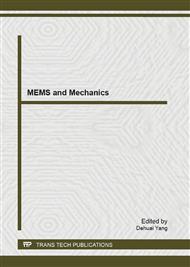[1]
Muhardi et al., (2010) "Engineering characteristics of Tanjung Bin coal ash" EJGE Vol. 15, Bund. K. p.1117 – 1129
Google Scholar
[2]
Abubakar, A. U. and Baharudin, K. S. (2012) "Properties of Concrete using Tanjung Bin power plant coal bottom ash and fly ash" International Journal of Sustainable Construction Engineering & Technology, Vol. 3 Issue 2. Pp. 56 – 69.
DOI: 10.4028/www.scientific.net/amr.705.163
Google Scholar
[3]
Awang, A., Marto, A. and Makhtar, A.M. (2011) "Geotechnical properties of Tanjung Bin coal ash mixtures for backfill materials in embankment construction" EJGE Vol. 16 p.1515 – 1531.
Google Scholar
[4]
Abubakar, A. U., (2012) "Quality Improvement of coal bottom ash lightweight concrete using fly ash" Unpublished Master of Engineering Degree Thesis, Infrastructure University Kuala Lumpur. Malaysia
Google Scholar
[5]
Lovell, C.W., Huang, W.H. and Lovell, J.E., (1991) "Bottom ash as highway material" Presented at the 70th Annual Meeting of the Transportation Research Board, Washington, D.C.
Google Scholar
[6]
Kim, B.J., Yoon, S.M. and Balunaini, U., (2006) "Determination of ash mixture properties and construction of test embankment-part A." Journal of Transportation Research Program, Final Report, FHWA/IN/JTRP-2006/24. Purdue University, W. Lafayette, Indiana
DOI: 10.5703/1288284314225
Google Scholar
[7]
Abubakar, A.U. and Baharudin, K.S. (2012) "Potential use of Malaysian thermal power plants coal bottom ash in construction" International Journal of Sustainable Construction Engineering & Technology Vol. 3 Issue 2 pp.25-37
Google Scholar
[8]
Robert, F.K. and Kenneth, S.S. (1993) "Trace elements in coal and coal combustion residues" Lewis Publishers.
Google Scholar
[9]
Siddique, R. (2003) "Effect of fine aggregate replacement with Class F fly ash on the mechanical properties of concrete." Cement and Concrete Research 33 p.539 – 547.
DOI: 10.1016/s0008-8846(02)01000-1
Google Scholar
[10]
Bai, Y., Ibrahim, R. and Basheer, P.A.M., (2010) "Properties of lightweight concrete Manufactured with fly ash, furnace bottom ash and Lytag". International Workshop on Sustainable Development and Concrete Technology, Pp. 77-88.
Google Scholar
[11]
Chindaprasirt, P., Jaturapitakkul, C., and Sinsiri, T., (2007) "Effect of fly ash fineness on microstructure of blended cement paste" Construction and building Materials. Vol. 21 p.1534 – 1541.
DOI: 10.1016/j.conbuildmat.2005.12.024
Google Scholar


